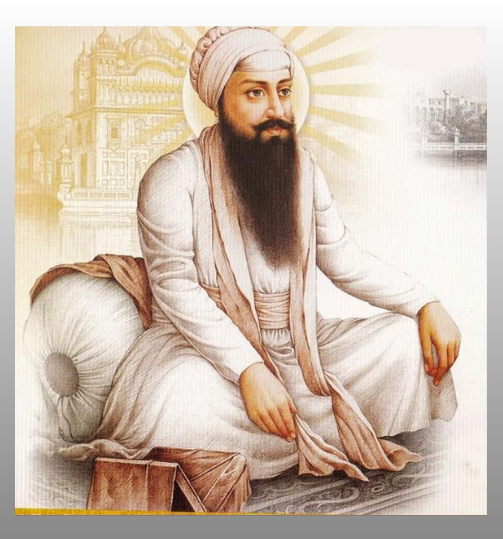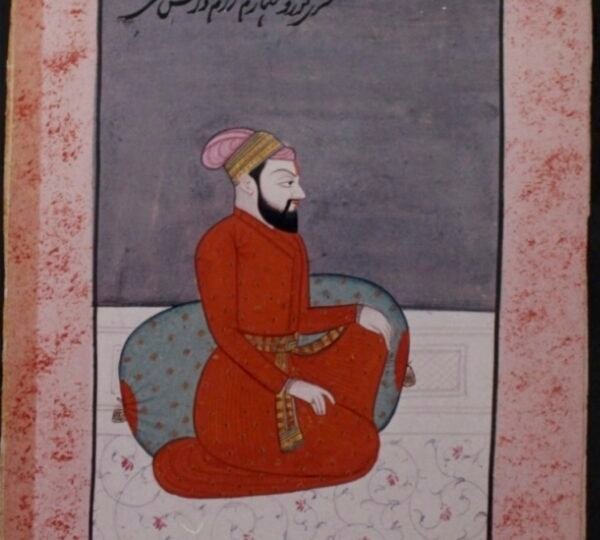Guru Arjan Dev Ji

Fifth Guru of Sikhism | First Sikh Martyr
Guru Arjan Dev Ji, born on 15 April 1563, was the fifth Sikh Guru and a pivotal figure in Sikh history. He was the youngest son of Guru Ram Das Ji and became Guru in 1581. He is known for compiling the Adi Granth (now Guru Granth Sahib) and constructing the Harmandir Sahib (Golden Temple). He was the first Sikh martyr, laying the foundation for Sikh resistance against injustice.
Early Life
- Born: 15 April 1563 in Goindwal Sahib, Punjab
- Parents: Guru Ram Das Ji and Mata Bhani Ji (daughter of Guru Amar Das Ji)
- He was spiritually inclined from a young age, deeply devoted to Sikh teachings and service.
Becoming the Guru
After the passing of Guru Ram Das Ji in 1581, Guru Arjan was chosen as the fifth Guru. Despite opposition from his elder brothers, his deep spiritual wisdom, humility, and devotion made him the clear choice.
Key Contributions
1. Compilation of the Adi Granth (Guru Granth Sahib)
Guru Arjan’s most significant contribution was the compilation of the Adi Granth in 1604, the first edition of the Sikh scripture. It included:
- Hymns from Guru Nanak to Guru Arjan
- Writings of Hindu and Muslim saints like Bhagat Kabir, Ravidas, and Farid
- A total of 3,384 hymns, emphasizing unity, love, and devotion to God
He installed the Adi Granth in the Harmandir Sahib and appointed Bhai Gurdas Ji as its first scribe.
2. Completion of Harmandir Sahib (Golden Temple)
Guru Arjan completed the construction of the Harmandir Sahib (started by his father Guru Ram Das) in Amritsar.
- He placed the Adi Granth inside and emphasized its four-door design, welcoming people from all backgrounds.
- He also had it built lower than its surroundings to symbolize humility.
3. Langar and Sikh Organization
He further expanded the manji system and langar system, supporting missionary work and ensuring that Sikhs remained spiritually and socially connected.
4. Promotion of Pilgrimage and Sikh Identity
Guru Arjan made Amritsar the religious center of Sikhism, attracting followers from all over India. He spread Sikh teachings across regions and emphasized kirtan (devotional singing) and seva (service).
Martyrdom – First Sikh Martyr
Guru Arjan Dev Ji’s growing influence drew the attention of Mughal Emperor Jahangir, who saw Sikhism as a threat to Islam and the state. Jahangir accused Guru Arjan of:
- Supporting the rebel prince Khusrau
- Spreading a new religious system

In 1606, Guru Arjan was arrested, fined, and asked to remove certain verses from the Adi Granth. He refused, saying:
“I bear all pain as the sweet will of the Lord.”
He was subjected to brutal torture:
- Made to sit on burning hot plates
- Boiling sand poured on his body
After five days of torture, Guru Arjan merged with the divine in Lahore, becoming the first Sikh martyr.
Legacy
Guru Arjan Dev Ji laid the spiritual and institutional foundation of Sikhism:
- Guru Granth Sahib as the eternal Guru
- The concept of martyrdom for justice and faith
- A strong, organized Sikh identity
- Construction of Harmandir Sahib, the spiritual heart of Sikhism
His sacrifice marked a turning point, giving rise to Sikh militarization under his son and successor Guru Hargobind Ji.
Famous Quote (Salok):
“Sweet is His will. Whatever He does is for the best.”
(Bhalla Ji Slok, Guru Granth Sahib)

